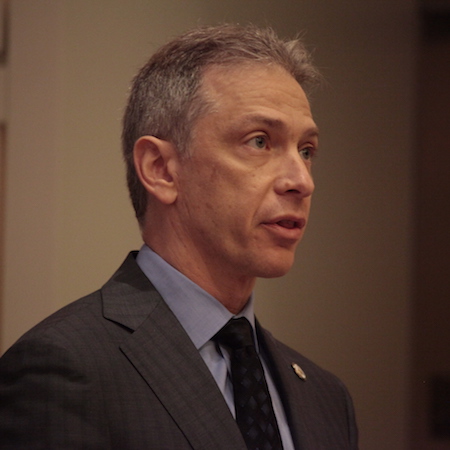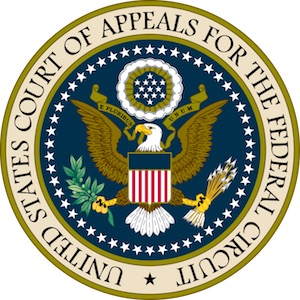USPTO issues patent eligibility guidance
 The Federal Register Notice signed by Director Iancu on April 18, 2018, which relates to the Federal Circuit’s recent decision in Berkheimer v. HP Inc., 881 F.3d 1360 (Fed. Cir. 2018), officially published on Friday, April 20, 2018. It is good news for patent owners with computer-implemented inventions and promises to bring a much more structured prosecution pathway.
The Federal Register Notice signed by Director Iancu on April 18, 2018, which relates to the Federal Circuit’s recent decision in Berkheimer v. HP Inc., 881 F.3d 1360 (Fed. Cir. 2018), officially published on Friday, April 20, 2018. It is good news for patent owners with computer-implemented inventions and promises to bring a much more structured prosecution pathway.
“The USPTO has issued today a Federal Register notice and memorandum to the patent examining corps in response to a recent decision by the U.S. Court of Appeals for the Federal Circuit in Berkheimer v. HP Inc., 881 F.3d 1360 (Fed. Cir. 2018), pertaining to subject matter eligibility,” explained Paul Fucito, a spokesman for the United States Patent and Trademark Office in the Office of Communications. “This new guidance pertains to the second step of the Alice-Mayo framework for determining subject matter eligibility, and is focused on how examiners are to analyze and document a conclusion that a claim element is ‘well-understood, routine, conventional’ during the patent examination process.”
Berkheimer is obviously an important and helpful decision from the patentee’s perspective. The Federal Register Notice appears to also be quite helpful as well. (more…)
Software Patentability 2017
Today, most computer innovations relate to software, at least in some important ways, and the USPTO continues to issue at least some patents for software-related inventions. No one seriously believes software will become patent ineligible per se, although it is undeniable that there is now a much steeper hill to climb than there once was. The trick is to define the invention as providing a technological solution to a technological problem. See A Guide to Software Patents and Software Patent Eligibility at the Federal Circuit.
For now, there has been no definitive statement by the Supreme Court that software is, in fact, patent eligible, although the Court has recognized at least some software-related innovation as being patent eligible. See Diamond v. Diehr. The Supreme Court also continues to consider the invention at issue in State Street Bank to be patent eligible, even if the “useful, concrete and tangible result” test does not live on.
02.24.17 | patent eligibility, section 101, software patents | Gene Quinn
USPTO instructs examiners on patent eligibility cases
 The United States Patent and Trademark Office recently issued a new memorandum to patent examiners on recent software patent eligibility decisions from the Federal Circuit. The memo sent to patent examiners provides discussion of McRo, Inc. v. Bandai Namco Games America and BASCOM Global Internet Services v. AT&T Mobility.
The United States Patent and Trademark Office recently issued a new memorandum to patent examiners on recent software patent eligibility decisions from the Federal Circuit. The memo sent to patent examiners provides discussion of McRo, Inc. v. Bandai Namco Games America and BASCOM Global Internet Services v. AT&T Mobility.
The PTO acknowledges in the memo that the Federal Circuit even more recently issued another precedential decision in Amdocs (Israel) Ltd. v. Openet Telecom, which will be discussed in forthcoming subject matter eligibility guidance. For more on that case, please see Software eligible because it recites technical solution to technical problem.
11.22.16 | patent eligibility, USPTO | Gene Quinn
Alice Experts and the Return of Second Pair of Eyes to the PTO
 “I have not yet run into an Art Unit that does not have someone designated as an Alice expert,” explained JiNan Glasgow of Neopatents. “They won’t always tell you who it is, but they all say they have an Alice expert.”
“I have not yet run into an Art Unit that does not have someone designated as an Alice expert,” explained JiNan Glasgow of Neopatents. “They won’t always tell you who it is, but they all say they have an Alice expert.”
While discussing the importance of doing interviews in every single case, Glasgow explained that although it is not something that has been generally publicly disclosed by the Patent Office, “in every art unit examiners confirm that there is an examiner within the Art Unit who is the Alice expert and that examiners have said that even if they are ready to allow a case, nothing can be allowed without the approval of that Alice expert.” This applies to TC 3600 and beyond, according to Glasgow.
If what examiner after examiner has told Glasgow is correct, this means there is essentially a return to the so-called “second pair of eyes” review at the Patent Office.
08.18.16 | patent eligibility, Patent Issues, Patent Prosecution, USPTO | Gene Quinn
Federal Circuit finds another software patent claim eligible
 Recently, the United States Court of Appeals for the Federal Circuit issued a decision in BASCOM Global Internet Services, Inc. v. AT&T Mobility LLC. Writing the opinion for the majority was Judge Raymond Chen, who also authored the Court’s decision in DDR Holdings, which is one of the few cases to similarly find software patent claims to be patent eligible. Joining Chen on the panel were Judges O’Malley and Newman, with Judge Newman concurring and writing separately.
Recently, the United States Court of Appeals for the Federal Circuit issued a decision in BASCOM Global Internet Services, Inc. v. AT&T Mobility LLC. Writing the opinion for the majority was Judge Raymond Chen, who also authored the Court’s decision in DDR Holdings, which is one of the few cases to similarly find software patent claims to be patent eligible. Joining Chen on the panel were Judges O’Malley and Newman, with Judge Newman concurring and writing separately.
In this case, the Federal Circuit agreed with the district court that the filtering of content is an abstract idea because “it is a long-standing, well-known method of organizing human behavior, similar to concepts previously found to be abstract.” However, the Federal Circuit ruled that the claims did add significantly more and, therefore, the claims are patent eligible.
07.29.16 | patent eligibility, Patent Issues, software patents | Gene Quinn


No Comments
05.10.18 | patent eligibility, USPTO | Gene Quinn